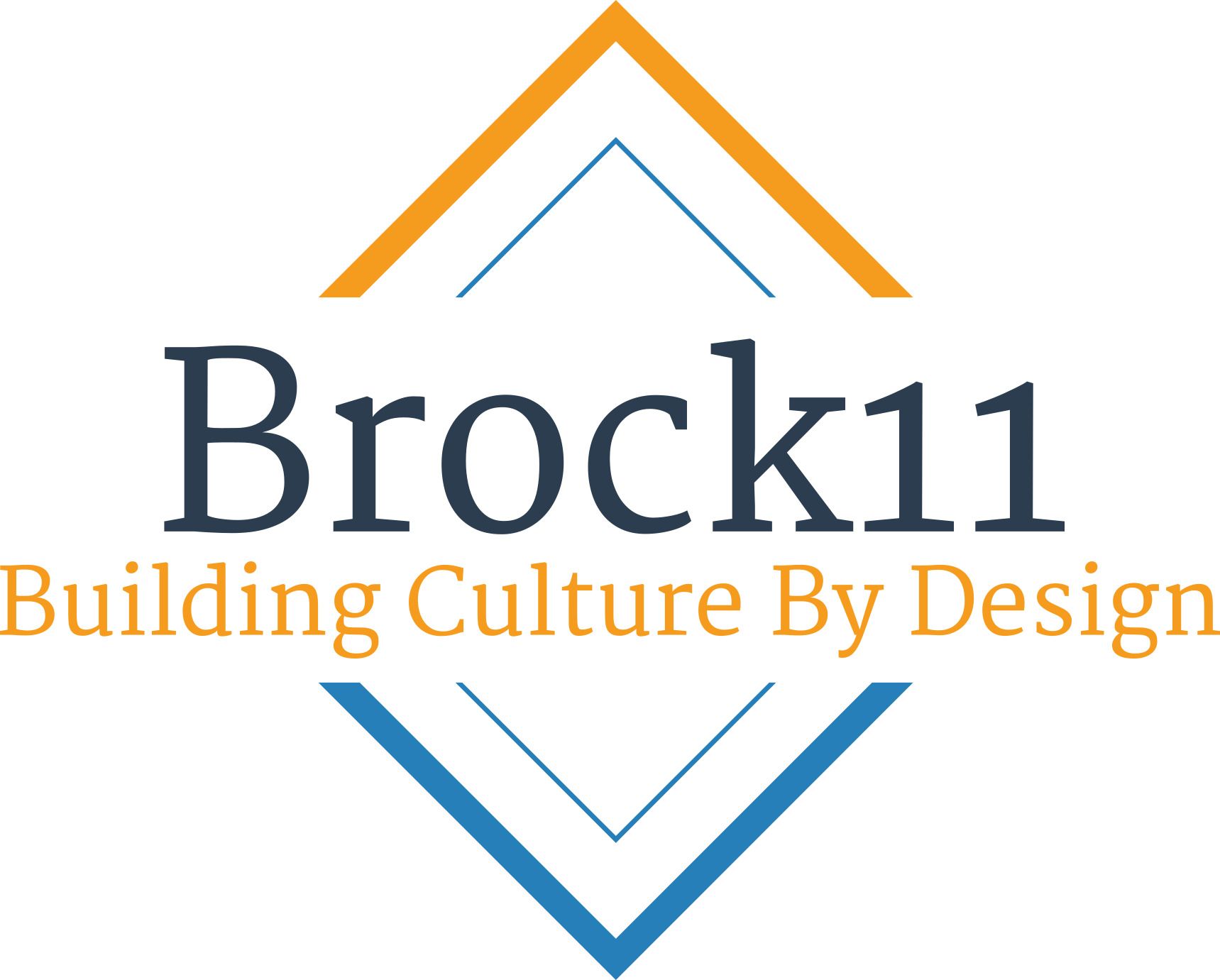
Welcome to the Brock11, where we're not just talking about culture – we're building it, by design! I'm Laura Brocklehurst, CEO of Brock11, and your guide on this journey towards transformative workplace environments. Today, we’re diving into the heart of what makes a truly dynamic workplace – psychological safety. So, whether you’re leading a team or part of one, grab a seat and let’s explore together how to create spaces where everyone can thrive. Ready? Let’s get started! Let's begin with the basics. What is psychological safety? Harvard Business School professor Amy Edmondson, who coined the term, defines it as 'a belief that one will not be punished or humiliated for speaking up with ideas, questions, concerns, or mistakes.' It's about feeling comfortable being yourself and expressing your thoughts without fear of negative consequences. In a psychologically safe workplace, employees feel valued and respected. They're confident to take risks, make mistakes, and voice their opinions. It's a culture that fosters openness, creativity, and learning. Now, what does psychological safety look like in practice? Well, there are several signs to look out for... First is high engagement. Teams with psychological safety are more engaged because they feel their opinions matter. Next, there's diversity in thought. These teams don't just echo each other – they bring unique perspectives and feel comfortable doing so. Another sign is high resilience. Teams bounce back faster from setbacks because they're not afraid to discuss and learn from failures. On the flip side, let's talk about what happens in the absence of psychological safety. In environments where psychological safety is missing, the atmosphere is quite different. You might notice... First, there's a culture of fear. People are afraid to speak up or challenge the status quo. Then, there's reluctance to innovate. Without the safety to fail, people stick to 'tried and true' methods, even if they're outdated. And lastly, high turnover rates. If employees don't feel valued or heard, they're likely to look for opportunities elsewhere. Clearly, the absence of psychological safety can have dire consequences. But don't worry – there are ways to cultivate it! So, how can leaders build a psychologically safe workplace? Here are some key strategies. First, lead by example. Show vulnerability and admit your own mistakes. This sets the tone for openness and learning. Encourage and practice active listening. Show your team that their thoughts and opinions are valued. Create a feedback-rich environment. Constructive feedback, delivered empathetically, helps people grow and feel supported. These steps are just the beginning. Creating a psychologically safe workplace is an ongoing process, and it starts with us – the leaders, the managers, and the team members. And that's a wrap on today's topic – psychological safety in the workplace. Remember, the best teams are those where everyone feels safe to be themselves and share their ideas. As we always say here, we're 'Building Culture By Design.' If you've enjoyed this video, don't forget to like, share, and follow for more insightful discussions. Drop your thoughts and experiences in the comments below – I'd love to hear how psychological safety plays out in your workplace. Until next time, keep nurturing a positive and inclusive work culture.

In the world of talent acquisition, hiring managers are akin to the conductors of an orchestra, guiding the harmony of recruitment efforts. Their role is multifaceted, extending beyond conducting interviews and making job offers. One key element that often gets overlooked but is absolutely critical is the time commitment a hiring manager must make to the recruitment process. In this blog post, we'll explore why dedicating time to recruiting is not just a preference but a necessity, and the far-reaching consequences when this commitment is neglected. 🔍 Defining the Position and Requirements - The Foundation of Recruitment: At the heart of successful recruitment is the precise definition of the open position's scope, responsibilities, and requirements. This crucial step demands the unwavering time and attention of hiring managers. Failure to allocate the necessary time can result in vague job descriptions, leading to confusion among candidates and a potential mismatch between expectations and reality. 📄 Creating a Compelling Job Description - The First Impression: A well-crafted job description is the initial interaction a candidate has with your organization. Hiring managers, along with HR, must invest time in creating descriptions that not only attract suitable candidates but also convey the essence of your company culture. Neglecting this step may result in job postings that fail to inspire or accurately represent your workplace. 🎯 Identifying Top Talent - A Continuous Effort: The search for top talent is an ongoing endeavor. Hiring managers should actively participate in candidate sourcing, tapping into their networks, attending industry events, and collaborating with HR and recruitment partners. The time invested here ensures a diverse pool of candidates who align with your organization's goals. 📃 Initial Sourcing and Applicant Screening - The First Filter: Hiring managers in partnership with HR often oversee the initial screening of resumes and applications, a process demanding meticulous attention to detail and time. However, with the demands of their roles constantly evolving, hiring managers and HR teams may find themselves stretched thin. This is where the strategic move to outsource this task to a reputable placement firm like Brock11 comes into play. By partnering with a strategic placement firm, hiring managers can save precious time and resources, allowing them to focus on revenue generating activities. This approach ensures that the screening process is efficiently and effectively managed by professionals who specialize in identifying the right candidates, allowing hiring managers and HR teams to focus on other critical aspects of the recruitment process, such as assessing cultural fit and conducting final interviews with highly qualified candidates. 🗣️ Conducting Final Interviews - The Crucial Dialogue: Interviews are the core of the hiring process. Effective interviews require time for preparation, thoughtful question development, and engagement with the candidate. Insufficient time investment may result in hasty decisions, overlooking critical skills, or failing to assess cultural fit accurately. It is critical that hiring managers come to interviews extremely prepared. Understanding the most important information you need to have about each applicant and having detailed questions will ensure this process is not only efficient but effective. Interviews will often go off script from prepared questions, this is a good thing, and you should prepare for it. This is when you really can dig deeper into not only candidate qualifications, but also their motivations. Having prepared questions will help you to bring the interview back to center ensuring you cover all the important areas you have outlined. ❤️🏢 Assessing Cultural Fit - The Heart of Your Company: A company's culture is its lifeblood. Hiring managers must dedicate time to assess candidates' alignment with this culture. The most qualified candidates often times are not successful in a culture that does not align with them. Rushed decisions may inadvertently introduce individuals whose values and work styles clash with the existing team, potentially disrupting harmony and cohesion. Often companies will have some overarching cultural characteristics, and each department will have a culture that aligns with their specific department. Ensuring candidates have a good cohesion with both is essential. 📈 Decision-Making and Offer Extension - The Final Step: The final decision-making process is where hiring managers' time commitment is most apparent. Rushed decisions, delayed feedback, or lack of follow-through can frustrate candidates, causing them to lose interest or seek opportunities elsewhere. Such hiccups can tarnish your employer brand and company culture. 🚀 Onboarding and Integration - Setting the Tone: Once candidates accept offers, it's imperative that hiring managers allocate time for structured onboarding and integration. Neglecting this phase can lead to confusion, poor integration, and even early attrition, harming both the individual and the company culture. While your company may have a well-defined onboarding process managed by HR and Training teams, its very important that hiring managers play an active role in onboarding. 📣 Providing Continuous Feedback - Nurturing Growth: Time spent providing constructive feedback and support to new hires is an investment in their long-term success. Lack of such commitment may lead to disengagement, misunderstandings, and ultimately, employee turnover. Ensuring that leadership teams are trained on giving feedback, constructively, effectively and efficiently is a good investment for any company. 📊 Measuring Success - Continuous Improvement: Regularly evaluating the recruitment process is essential. HR teams and Hiring managers must find time to assess the effectiveness of their strategies and make necessary improvements to ensure long-term success and a healthy company culture. Conclusion: In the world of recruitment, time commitment from hiring managers is not just a choice; it's imperative. Neglecting this commitment can lead to candidates falling through the cracks, tarnishing your company's image, and undermining your culture by design. By recognizing the pivotal role of time in the recruitment process, hiring managers can contribute significantly to building a strong, thriving workforce, ultimately driving their organization's success while fostering a positive company culture that attracts and retains top talent. If you find any of the topics in this blog post to be a challenge in your workplace, Brock11 is here to help! We can take things off your plate, anything from sourcing and screening candidates to writing job descriptions and conducting pre-employment testing, freeing up your precious time. We are skilled in developing and training leadership teams and hiring managers on conducting interviews, developing onboarding plans and giving valuable feedback to your employees.

In life, it's easy to find ourselves trapped in situations that no longer serve us. We might feel compelled to squeeze into spaces that no longer align with our personal growth or professional aspirations. However, just as a seedling outgrows its pot, we, too, deserve to thrive and reach our full potential. It's time to break free from the limitations and embrace the idea that we are meant for more. This blog post will explore why we shouldn't shrink to fit into places we've outgrown, both in our personal lives and professional endeavors. Embracing Personal Growth: In our personal lives, growth is essential for our overall well-being and happiness. It's important to recognize when we've outgrown certain relationships, habits, or beliefs that no longer serve our personal growth. Here's how you can thrive instead of shrinking to fit: a. Letting go of toxic relationships: Surrounding ourselves with supportive and positive influences is crucial. If a relationship drains our energy, limits our potential, or stifles our personal growth, it's time to reevaluate its place in our lives. We deserve to be surrounded by people who uplift us, encourage our aspirations, and foster personal development. b. Challenging limiting beliefs: Often, we shrink to fit due to our own limiting beliefs. We might fear failure, judgment, or the unknown. To thrive, we must challenge these beliefs and replace them with empowering thoughts. Recognize that growth happens outside our comfort zones, and embracing new experiences leads to personal development and fulfillment. c. Pursuing passions and interests: Don't settle for a life that doesn't align with your passions and interests. Embrace new hobbies, explore your creative side, and engage in activities that bring you joy. By dedicating time to what truly matters to you, you'll cultivate a sense of purpose and fulfillment. 2. Flourishing in Professional Life: Similar to our personal lives, our professional journey should be a path of growth and fulfillment. Here's how you can thrive in your professional life instead of shrinking to fit: a. Seeking new challenges: Stagnation can hinder your professional growth. Instead of settling for comfort and familiarity, be open to new challenges that push your boundaries and help you acquire new skills. Embrace opportunities for professional development, whether it's through additional training, taking on ambitious projects, or seeking a new role that aligns with your aspirations. b. Building a supportive network: Surround yourself with colleagues who inspire and motivate you. Seek mentors and professional networks that encourage your growth. Engage in conversations with individuals who challenge your thinking and help you reach new heights. A strong support system can be invaluable in your professional journey. c. Embracing change and innovation: Industries and workplaces evolve rapidly, and those who resist change risk becoming stagnant. Instead, embrace innovation and stay adaptable. Be open to new technologies, methodologies, and ideas that can help you thrive in your field. Actively seek out opportunities to learn and grow within your professional domain. In both our personal and professional lives, it's crucial to recognize when we've outgrown certain situations. We shouldn't shrink to fit into spaces that no longer align with our growth and potential. By letting go of toxic relationships, challenging limiting beliefs, pursuing passions, seeking new challenges, building a supportive network, and embracing change, we can thrive and reach our full potential. Remember, you deserve to flourish in every aspect of your life. Don't be afraid to step out of the comfortable and familiar, because that is where growth and fulfillment lie. Embrace the journey of personal and professional development, and refuse to shrink to fit into places you've outgrown. Takeaway 1: Assess and Reflect After reading this blog post, take some time for self-reflection and assessment. Evaluate your personal and professional life to identify areas where you may have been shrinking to fit into spaces that no longer serve you. Ask yourself the following questions: Are there any toxic relationships or negative influences in my life that I need to let go of? What limiting beliefs have been holding me back, and how can I challenge and replace them with empowering thoughts? Am I dedicating enough time to pursue my passions and interests? In my professional life, am I seeking new challenges and opportunities for growth? Do I have a supportive network that encourages and uplifts me? Am I embracing change and innovation in my professional domain? Taking the time to honestly assess these areas will help you identify areas of improvement and set the stage for positive changes in your life. Takeaway 2: Take Action and Prioritize Growth Once you have identified areas where you've been shrinking to fit, it's time to take action and prioritize your personal and professional growth. Here are some steps you can take: Let go of toxic relationships: Take the necessary steps to distance yourself from toxic people who drain your energy and limit your potential. Surround yourself with supportive and positive influences that uplift and encourage your growth. Challenge limiting beliefs: Identify the limiting beliefs that have been holding you back and actively challenge them. Replace negative thoughts with empowering affirmations and embrace a growth mindset. Pursue passions and interests: Make time for activities that bring you joy and align with your passions. Whether it's a hobby, creative pursuit, or personal project, prioritize these activities and integrate them into your routine. Seek new challenges professionally: Look for opportunities to stretch yourself professionally. Take on new projects, seek additional training or education, and consider pursuing a role or career path that aligns with your aspirations. Surround yourself with like-minded individuals who inspire and support your growth. Seek out mentors, join professional networks or communities, and engage in meaningful conversations that push your thinking. Embrace change and innovation: Stay adaptable and open to new ideas, technologies, and methodologies in your professional field. Actively seek opportunities to learn and evolve, staying ahead of the curve and embracing change as a catalyst for growth. Remember, the journey towards thriving and reaching your full potential is ongoing. Continuously assess, take action, and prioritize growth to ensure you never shrink to fit into places you've outgrown. You deserve to flourish in all aspects of your life.

Have you ever felt that you are not living up to your full potential? Do you feel like you have reached a dead-end in your career or personal life? It's not uncommon to feel that way, but the good news is that you have the power to change your situation. The key is to adopt the magic of thinking big. Thinking big is a mindset that allows you to see beyond your current circumstances and envision a bigger and better future for yourself. It's about setting audacious goals and believing in your ability to achieve them. The magic of thinking big lies in the fact that it can transform your life in countless ways. I recently finished a book called The Magic of Thinking Big by David J. Schwartz and have outlined the five takeaways. Priorities Are Never in Conflict One of the biggest misconceptions about thinking big is that it requires you to prioritize certain aspects of your life over others. However, the reality is that priorities are never in conflict. You can have a successful career, a fulfilling personal life, and pursue your passions at the same time. It's all about managing your time effectively and setting realistic goals. 2. Successful People Don't Make Excuses The most successful people in the world don't make excuses; they accommodate the challenge. They understand that challenges are an inevitable part of life, and they use them as opportunities to learn and grow. When you adopt a big-thinking mindset, you are no longer limited by your circumstances. You become the master of your fate, and you are in control of your destiny. 3. No Matter Where You Are or Who You Are, You Can Have a Big Life One of the most beautiful things about the magic of thinking big is that it is accessible to anyone. No matter where you are or who you are, you can have a big life. You define what that means for you. It's important to take on things that look bigger than what you can handle. When you step outside of your comfort zone, you allow yourself to grow and expand your horizons. 4. People See in You What You See in Yourself Your mindset is a powerful thing. People see in you what you see in yourself. When you adopt a big-thinking mindset, you radiate positivity and confidence, and people are naturally drawn to you. You become a magnet for success, and opportunities will come your way. Learn to See What You Can Be, Not Just What Exists The magic of thinking big is all about seeing the bigger picture. It's about learning to see what you can be, not just what exists. When you adopt this mindset, you start to think outside of the box, and you become more creative and innovative. You start to see opportunities where others see obstacles. 5. Action Cures Fear One of the biggest obstacles to thinking big is fear. Fear of failure, fear of rejection, fear of the unknown. However, the truth is that action cures fear. When you take action toward your goals, you build momentum, and fear loses its grip on you. The more you take action, the more confident and empowered you become. In conclusion, the magic of thinking big is a mindset that can transform your life in countless ways. It's about setting audacious goals and believing in your ability to achieve them. When you adopt this mindset, you become the master of your fate, and you are in control of your destiny. So, embrace the bigger picture, step outside of your comfort zone, and start living your best life today. After reading this blog post, take some time to create a Big Thinking Plan that aligns with the message. This plan should include the following steps: Identify one big goal: Think about what you want to achieve in your personal and professional life. Be audacious and don't limit yourself. Break down your goal into smaller, actionable steps: Break your big goals into smaller, achievable steps. This will make them less overwhelming and more manageable. Create a timeline: Set a timeline for achieving your goal. This will help you stay on track and accountable. Take action: Start taking action towards your goals. Remember, action cures fear, so don't let fear hold you back. Celebrate your successes: Celebrate your successes along the way. This will help you stay motivated and inspire you to keep going. By creating a Big Thinking Plan, you are taking the first step toward living your best life. Remember, no matter where you are or who you are, you can have a big life. So, embrace the bigger picture and start working towards your goals today. Thank you for spending time with me today, until next time, be well and think BIG!

In today's world, there is often a great emphasis placed on talent and skill. Society seems to celebrate those who possess extraordinary abilities, whether it be in sports, music, art, or any other field. While talent certainly has its merits, it is character and integrity that truly set individuals apart and take them places that their talent alone cannot. Character is the set of traits that define who a person is at their core. It encompasses values such as honesty, kindness, perseverance, and empathy, among others. On the other hand, integrity is the adherence to a set of principles or beliefs, regardless of external pressures or influences. When it comes to success in life, both character and integrity play a critical role. Consider, for example, a job interview. While a candidate may have all the necessary technical skills and qualifications for the position, it is often their character and integrity that set them apart from other applicants. Employers value employees who are reliable, trustworthy, and honest, as these traits lead to a more productive and harmonious workplace. Similarly, in the world of sports, athletes who exhibit exceptional character and integrity often earn the respect and admiration of their fans and peers. This is because these traits demonstrate a level of commitment and dedication to their craft that goes beyond just their talent alone. In the long run, it is often character and integrity that determine an individual's success and happiness. Talented individuals may achieve great things in the short term, but it is their character and integrity that sustain them over the long haul. This is because these traits lead to a sense of purpose and meaning in life that transcends mere material or superficial achievements. Ultimately, it is important to remember that character and integrity are qualities that can be cultivated and developed over time. While talent may be innate, these traits require effort and intentionality to develop. This means taking the time to reflect on one's values and principles and actively working to align one's actions with them. In conclusion, while talent certainly has its place in the world, it is character and integrity that truly set individuals apart and enable them to achieve long-term success and happiness. By focusing on cultivating these traits, individuals can become not only better professionals but also better human beings.

In today's fast-paced business environment, organizational agility has become a critical factor for companies that want to remain competitive and thrive. Organizational agility is the ability of an organization to respond quickly and effectively to changes in the marketplace, customer needs, and internal dynamics. Companies that possess high levels of agility are better equipped to adapt to new challenges and opportunities, and make the most of them. So how can companies achieve organizational agility? Here are some of the best practices that companies can follow: Develop a culture of innovation: Encouraging creativity and innovation throughout the organization can help generate new ideas and solutions to problems. Companies that foster an environment of experimentation and risk-taking can adapt more quickly to changing circumstances. Embrace technology: Implementing new technologies can help organizations automate processes and gain insights that can help them make better decisions faster. Adopting cloud-based solutions, artificial intelligence, and machine learning can help companies achieve greater agility. Foster collaboration and communication: Encouraging collaboration and communication between departments and teams can help improve efficiency and productivity, and facilitate faster decision-making. Companies that have a culture of collaboration can respond more quickly to changes. Be customer-focused: Companies that prioritize customer needs and are responsive to feedback can adapt more quickly to changes in customer preferences and market conditions. Keeping customer needs at the forefront can help companies pivot and change direction as needed. Adopt agile methodologies: Agile methodologies are designed to help organizations become more responsive to change. By breaking down work into smaller, more manageable pieces and iterating quickly, companies can adapt more quickly to changes in the market and customer needs. Foster a learning culture: Companies that encourage continuous learning and development can stay ahead of the curve and adapt more quickly to changes in their industry. By investing in employee training and development, companies can build a workforce that is better equipped to respond to new challenges and opportunities. In conclusion, organizational agility is crucial for companies that want to succeed in today's fast-paced business environment. By fostering a culture of innovation, embracing technology, encouraging collaboration, being customer-focused, adopting agile methodologies, and fostering a learning culture, companies can become more agile and better equipped to adapt to changes.

Leadership can be an overwhelming task, and it’s not always easy to stay on top of everything. However, being a prioritized leader is critical for success, and it requires a specific approach. Prioritized leaders have a clear understanding of their purpose and goals, and they take action that aligns with those objectives. They prioritize people over profit, keep pace with changing circumstances, consider the perception of others, and, of course, keep an eye on profit. In this blog post, we will explore the 5P process of being a prioritized leader and how it can help leaders stay focused on what’s important. Purpose: A prioritized leader knows their "why." Understanding your purpose as a leader means having a clear understanding of your vision, mission, and values. It's crucial to know what you stand for and why you do what you do. Your purpose should be the driving force behind everything you do, and it should guide your decisions and actions. As a prioritized leader, it's essential to communicate your purpose to your team and ensure that everyone understands the importance of the work they are doing. People: A prioritized leader prioritizes people over profit. It's essential to value the people on your team and build strong relationships with them. A leader who prioritizes people creates an environment of trust and collaboration, which leads to increased productivity and job satisfaction. As a prioritized leader, it's essential to listen to your team and ensure that they feel heard and valued. You should also provide your team with the tools and resources they need to succeed. Pace: A prioritized leader keeps pace with changing circumstances. Leaders who are slow to adapt to change can quickly become irrelevant. A leader who prioritizes pace understands that change is constant and adapts quickly to new circumstances. As a prioritized leader, it's essential to stay informed about industry trends and changes in the market. You should also be proactive in making changes to your strategy and processes to stay ahead of the competition. Perception: A prioritized leader considers the perception of others. A leader who prioritizes perception understands that their actions can have a significant impact on how others perceive them. As a prioritized leader, it's essential to consider the impact of your actions on others and ensure that you are building a positive reputation. You should also be transparent and honest with your team and stakeholders. Profit: A prioritized leader keeps an eye on profit. While people and purpose should be a leader's top priority, profit is still important. A leader who prioritizes profit understands the importance of making a profit to sustain their business and continue to invest in their team and operations. As a prioritized leader, it's essential to balance your focus on profit with your focus on people and purpose. The one thing that will derail any leader is inconsistency with any of the 5P process. Consistency is powerful, it builds trust and understanding. In conclusion, being a prioritized leader requires a specific approach that focuses on purpose, people, pace, perception, and profit. By prioritizing these elements, leaders can stay focused on what's important and make decisions that align with their goals and values. As a prioritized leader, it's essential to communicate your purpose to your team, prioritize people over profit, keep pace with changing circumstances, consider the perception of others, and keep an eye on profit. By following the 5P process, leaders can lead their team to success and make a positive impact on their organization and the world.

In the world of recruitment, time is of the essence. It's crucial for hiring managers to contact candidates quickly and conduct interviews as soon as possible. In this blog post, we'll explore the importance of contacting candidates quickly when recruiting and the reasons why hiring managers need to carve out time to conduct interviews promptly. First Impressions Matter The recruitment process is the first impression a candidate has of their potential next employer. If the recruitment process is slow, disorganized, or non-existent, candidates may form a negative impression of the organization. They may feel that the organization is not interested in them or that they are not a priority. This can lead to a candidate withdrawing their application, accepting another job offer, or posting negative feedback online, all of which can damage the organization's reputation. The first impression plays into your employer brand. Making a good one is critical. Timeline Matters The longer a candidate remains in the recruitment process, the greater the likelihood that they will lose interest or accept another job offer. Here are some stats to noodle on: According to a study by Glassdoor, the average job interview process in the US takes 23.8 days. That's nearly a month for a candidate to wait for a decision. A recent study by LinkedIn found that 85% of candidates lose interest in a job if they don't hear back from the employer within a week. According to a study by CareerBuilder, 43% of job seekers completely fall out of the candidate pool if they don't hear back within two weeks of an interview. If a candidate hasn't heard back from a potential employer within a reasonable amount of time, they may assume that they are no longer being considered for the role and may move on to other opportunities. This means that if you wait too long, you'll miss out on a LOT of qualified candidates who could have been a great fit for your company. Competitive Advantage In today's job market, the competition for top talent is fierce. If you want to win, you need to move quickly. Contacting candidates quickly gives you a competitive advantage over other companies who may be slower to respond. By getting in touch with candidates as soon as possible, you show them that you're proactive and serious about hiring. Conclusion Contacting candidates quickly is a crucial step in the recruiting process. it is essential to securing top talent and creating a positive candidate experience. It shows candidates that you value their time and are serious about hiring them. Additionally, it gives you a competitive advantage over other companies who may be slower to respond. If hiring managers want to attract top talent and build a strong team, they need to make contacting candidates a priority. The longer you wait, the more likely you are to lose out on the best candidates. Time is of the essence in recruiting, so don't wait to contact candidates. Lastly, don't misunderstand the message, moving quickly does not mean settling or hiring the first person you speak with, it simply means you contact candidates and start the interview process quickly. It also means that you keep the candidates that you are interested in engaged while you are completing the interview process. Silence or lack of communication during the recruiting process can have detrimental effects, leading to missed opportunities and a poor candidate experience. Brock11 helps companies across the united states with contacting candidates quickly and keeping them engaged throughout the recruitment process. If this is an area you could use support in, we are here for you!

As a leader, you have an important responsibility to your employees. You need to create an environment in which they feel valued and respected. One way to do this is by having regular one-on-one meetings with each of them. These meetings aren’t about “giving orders”; they are about learning about your employees on a personal and professional level. Unfortunately, many leaders make the mistake of canceling these meetings without considering the consequences. The Benefits of Holding Regular One-On-One Meetings Regular one-on-one meetings give your employees an opportunity to express their opinions, concerns, and ideas without feeling intimidated or overwhelmed by larger team meetings or conference calls. They also provide a chance for you to get to know your team members better on a personal level. This can help improve morale and increase engagement and loyalty among your staff. Additionally, it gives you the opportunity to assess employee performance and identify areas that need improvement or additional training. Remember this time is about your employee, spend it learning more about them personally and professionally. Often times when leaders are trying to connect on a more personal level, they will spend time talking with their employees about themselves, and while this feels like a way to get more closely connected it can be off putting and give the appearance that you want to spend this valuable time only talking about yourself. Try to shift the conversation to be about the employee. Let’s look at some of the reasons why one on ones are essential for all employees. Building Relationships and Establishing Trust One on one meetings allow you to build stronger relationships with each of your employees, as they provide an opportunity to get to know them better. This will help foster a sense of trust between you and your team members, because they will feel more comfortable sharing their ideas and opinions without fear of judgement or criticism. Additionally, it allows you to provide constructive feedback in an environment where both parties can openly discuss the issue without feeling threatened or uncomfortable. Providing Clear Direction and Expectations One on one meetings also give you an opportunity to clearly define expectations with each employee. This is especially helpful if someone is struggling in their current role—the meeting provides a chance for both parties to come up with improvement plans and set goals for success. It also gives employees an outlet to express any concerns they may have about their job or their role within the organization, which can help ensure that they stay engaged and motivated in their work. Creating Opportunities for Growth Finally, one on ones are a great way to identify opportunities for growth within the organization. As a leader, it’s important that you take time to get to know each person under your management so that you can better understand their strengths and weaknesses. This understanding will enable you to create development plans that are tailored specifically for each individual, allowing them to grow both personally and professionally within your organization. Leaders Who Don't Hold Regular One-on-One Meetings Despite the obvious benefits of holding regular one-on-one meetings, some leaders still do not prioritize them — especially if they’re feeling overwhelmed or pressed for time. But cancelling these meetings sends the wrong message; it implies that you do not value the input of your employees. If you cancel too often, it can create feelings of resentment among your staff and lead them to question whether or not you actually care about their well-being and development within the company. Making Time for Your Team The truth is that as a leader, it is up to you to make time for these important conversations with each member of your team. While it may feel like a burden at first, once you start taking advantage of the opportunities these conversations present—like getting valuable insights into how your team is working together—you will quickly realize why they are worth taking seriously. And when done properly, these meetings can be some of the most rewarding experiences for both leaders and their teams alike! Lastly, as a leader, it is important that you take time out of your day for regular one on ones with each member of your team. These conversations provide invaluable insights into how each person is performing as well as how well everyone is working together as a group. Plus, they demonstrate that you truly care about each individual's success within the organization—which can help boost morale and engagement among all members of the team! So don't forget—prioritize those one on ones! They're essential for any successful business and are statistically linked to improved employee retention which drives down turnover rates, improved moral and overall job satisfaction. If you are a leader that would like to get back on track with your one on one meetings, Brock11 can assist you with valuable tools to ensure that you are having engaging, and effective one on one meetings.

With employees’ desire for development still a top priority, it's important for leaders to be aware of the different development areas available that can help each employee reach their full potential. It can be overwhelming to pinpoint what’s best for each individual employee, so here are four development areas that every employee can benefit from. Soft Skills Development Soft skills training is often overlooked in favor of more technical skills, but they are crucial for career success. Soft skills include communication, problem-solving, collaboration and team building, leadership, conflict resolution, empathy, and time management. Investing in soft skill training can help your employees develop their abilities in these areas and use them to become better leaders in any situation. Technical Skills Training In addition to soft skills training, employees should also have access to technical skills training. Technology changes rapidly and businesses must keep up or risk falling behind the competition. Providing employees with access to technical courses and technology tutorials can help them stay ahead of the curve and improve their job performance. Additionally, providing access to specialized courses on specific software platforms or tools can be extremely beneficial as well. Leadership Development Leadership development focuses on building managerial skills such as delegating tasks, inspiring teams and making decisions with confidence. Leadership development is key for employees who plan on taking on more responsibility within the company or those who aspire to rise into leadership positions down the line. Encouraging these individuals to hone their leadership capabilities will give them the confidence and know-how needed when faced with challenges in their role or career path ahead of them. Mentorship Opportunities Mentorship opportunities are equally as important as soft skill and technical skill training when it comes to employee development. Having access to a mentor who has experience in the industry can provide invaluable guidance on how best to navigate career paths and handle work-related issues like networking or conflict resolution. Mentorships also foster stronger relationships between employers and employees by providing a platform for open dialogue about challenges faced at work or other topics related to professional growth opportunities. Employee development should always be an important part of any business plan. Providing your employees with access to soft skills training, technical skills training, leadership development and mentorship opportunities will not only benefit them professionally but will also lead to improved morale which can boost productivity within your organization as well. Investing in these three development areas is sure to increase job satisfaction among your team members while improving their overall job performance too! Brock11 is here to help you create development plans that will last throughout your employees career!


